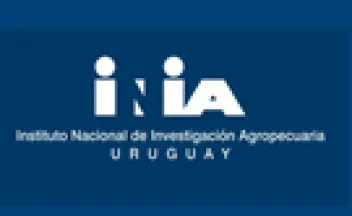Instituto Nacional de Investigación Agropecuaria
Characterization of fine wool production systems:factors to be considered for the maintenance of ecosystem integrity. [Conference paper].

The production of fine, super fine and ultrafine wool in Uruguay is a highly competitive alternative, that is developed mainly in mixed pastoral systems (cattle and sheep) whose forage base is the natural grasslands communities. The objective of this article is to analyze some farms as study cases, in order to determine the factors related to the production system that are affecting ecosystem integrity and also propose measures for improving management aspects.
Characterization of fine wool production systems: factors to be considered for the maintenance of ecosystem integrity. [Conference paper].

The production of fine, super fine and ultrafine wool in Uruguay is a highly competitive alternative, that is developed mainly in mixed pastoral systems (cattle and sheep) whose forage base is the natural grasslands communities. The objective of this article is to analyze some farms as study cases, in order to determine the factors related to the production system that are affecting ecosystem integrity and also propose measures for improving management aspects.
Birds as environmental indicators for the design of sustainable livestock system. [Conference paper].

Wild birds, strongly associated with vegetation structure of livestock farms, are often used as indicators of environmental health and sustainability. Our hypothesis is that grazing intensity is related to bird species through the effect of the former on vegetation structure. Here, we explored the relationship between birds and vegetation structure in open woodlands and savannahs, which characterize livestock farms in eastern Argentina and grasslands in Uruguay.
Can LEAP-FAO biodiversity assessment guidelines contribute to the spatial design of operational production systems with high biodiversity?. [Conference paper]

LEAP is a multi-stakeholder partnership including the private sector, governments and civil society. It addresses the need for a coordinated approach to developing clear guidelines for environmental performance assessment based on international best practices.
Improving sustainability in livestock family farm systems based on natural grasslands in Uruguay implementing a co-innovation process. [Conference paper].

Livestock production in Uruguay involves the management of C4-species dominated natural grasslands, which cover almost 65% of the country's surface area. Almost 75% of the farms specialized in beef and wool production are family farms. The main objective in all farms was to increase productivity and income without affecting the environment and without increasing labour time. In all farms the redesign focused on increasing forage production (native grasslands) and stabilizing year-round availability (improved pastures) and increasing and stabilizing meat productivity.
Modeling of land uses to reduce the export of nutrients from dairy production systems to surface waters in the Santa Lucía River basin. [Conference paper].

Loss of water quality in streams is an increasing problem in Uruguay, and dairy production stands out as one of most influential activities in diffuse nutrient losses (Failde et al., 2015). Santa Lucía river basin with a 13,681 km2 surface, has a high relevance to Uruguayan society because it is the main source of drinking water for metropolitan area of Montevideo, where 60% of country population lives.
Linking livestock production and wild biodiversity:Contribution of pastoral production systems to the habitat of bird priority conservation species. [Conference paper].

ABSTRACT. Livestock production is being questioned for its greenhouse gas emissions. However, production systems influence multiple environmental variables and, in some cases, contribute to very valuable environmental services. This work summarizes information collected at 30 livestock production farms and four IN-IAs experimental fields allocated throughout the Uruguayan territory. A total of 231 bird species were recorded, 42 of them identified like priority conservation species. Of these species 10 are included in UICN lists and 19 in Uruguayan Red List.
Linking livestock production and wild biodiversity: Contribution of pastoral production systems to the habitat of bird priority conservation species. [Conference paper].

ABSTRACT. Livestock production is being questioned for its greenhouse gas emissions. However, production systems influence multiple environmental variables and, in some cases, contribute to very valuable environmental services. This work summarizes information collected at 30 livestock production farms and four IN-IAs experimental fields allocated throughout the Uruguayan territory. A total of 231 bird species were recorded, 42 of them identified like priority conservation species. Of these species 10 are included in UICN lists and 19 in Uruguayan Red List.
Paginación
- Página anterior
- Página 21
- Siguiente página
